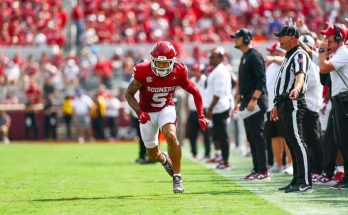The NBA offseason is always a period filled with intrigue, speculation, and strategic maneuvering, as teams look to reshape their rosters for the upcoming season while balancing salary cap constraints and long-term planning. One of the more intriguing developments this offseason has involved the Milwaukee Bucks, the Golden State Warriors, and one of the league’s most promising young talents, Jonathan Kuminga. Rumors and reports have suggested that the Bucks expressed genuine interest in acquiring Kuminga, and the Warriors, recognizing an opportunity to leverage their depth and maintain flexibility, reportedly proposed a sign-and-trade deal involving Bobby Portis. While the details of these negotiations are complex, the potential ramifications of such a move could ripple across both franchises and the broader NBA landscape.
Jonathan Kuminga has been one of the league’s most closely watched young players since being drafted by the Warriors in 2021. Standing at 6-foot-7 with a 7-foot wingspan, Kuminga possesses a rare combination of athleticism, versatility, and upside that makes him a potential game-changer on both ends of the court. During his tenure with Golden State, Kuminga has shown flashes of brilliance, particularly as a transition player capable of finishing at the rim, defending multiple positions, and stretching the floor with a developing three-point shot. Despite this potential, the Warriors’ roster construction around established stars like Stephen Curry, Klay Thompson, and Draymond Green has limited Kuminga’s consistent minutes, creating a scenario in which a trade could be mutually beneficial for both player and team.
The Bucks’ interest in Kuminga reflects their ongoing pursuit of young, high-upside talent to complement their core of Giannis Antetokounmpo, Khris Middleton, and Jrue Holiday. Milwaukee has long been a team built around size, versatility, and defensive acumen, and Kuminga’s profile fits neatly within that framework. The Bucks are aware of the need to remain competitive not only in the short term but also in building a sustainable window around Giannis. Acquiring a player like Kuminga, who can contribute immediately while also possessing untapped potential, could provide the Bucks with a multi-year solution on the wing, an area where they have occasionally struggled to find consistent scoring and defensive impact beyond their stars.
Golden State, for its part, has historically been savvy in leveraging their assets to maximize both immediate and future flexibility. The Warriors’ willingness to explore a sign-and-trade involving Bobby Portis for Kuminga illustrates their strategic mindset. Portis, a veteran forward known for his energy, rebounding, and ability to stretch the floor, could offer the Warriors a more proven, complementary piece capable of contributing immediately in a championship-contending environment. While Kuminga’s potential is tantalizing, the Warriors must also consider roster fit, contractual obligations, and the delicate balance between development and contention. A sign-and-trade provides a mechanism to achieve this balance, allowing both teams to address their needs while navigating salary cap restrictions.
A sign-and-trade scenario involving Portis and Kuminga is particularly interesting because it requires careful consideration of financial and contractual implications. Bobby Portis is a veteran with a sizable contract, and the Warriors would likely need to structure the trade in a way that maintains cap compliance while offering Milwaukee a player of comparable value to Kuminga. Sign-and-trade deals are often complex, as they involve simultaneous negotiations between multiple parties and can hinge on factors such as contract length, salary matching, and team objectives. The fact that this possibility was even floated underscores the mutual interest and potential strategic fit between the two teams.
From the Bucks’ perspective, acquiring Kuminga through a sign-and-trade could be an ideal scenario. Rather than engaging in a straight trade for a player with limited financial flexibility or expiring contracts, a sign-and-trade allows Milwaukee to absorb a young, controllable asset while potentially shedding some salary or acquiring a player better suited to their immediate competitive window. Kuminga’s age and potential trajectory make him particularly attractive, as the Bucks can develop him under the guidance of their established veterans, with the hope of unlocking the kind of two-way impact that has characterized Giannis’ rise to MVP-caliber play.
Meanwhile, for the Warriors, trading Kuminga for Portis could address several key needs. Portis brings veteran experience and a proven skill set, which could be particularly valuable in high-pressure playoff situations. While Kuminga’s upside is undeniably high, the Warriors may have calculated that Portis’ contributions in the present outweigh the potential of a player whose role may remain somewhat limited behind their star-studded lineup. Additionally, acquiring Portis could provide more roster flexibility, particularly in managing rotations, injuries, and matchup-specific strategies. In essence, the Warriors could convert potential into immediate reliability, which is a hallmark of championship-level team management.
The strategic calculus behind such a trade also reflects the evolving nature of player evaluation in the NBA. Teams are increasingly relying on advanced analytics, positional versatility, and developmental timelines to make decisions that maximize both competitive advantage and long-term sustainability. Kuminga represents a high-upside developmental piece, while Portis represents a known quantity who can fulfill specific needs immediately. The decision to propose a sign-and-trade is thus emblematic of the balancing act that front offices must navigate: the tension between potential and proven performance, between immediate contention and long-term planning, and between financial prudence and competitive ambition.
Of course, such trade discussions are rarely straightforward, and multiple factors could influence whether a deal ultimately materializes. For one, the personal preferences and contractual situations of the players involved can play a significant role. Kuminga, as a young talent with potential, may have aspirations or preferences regarding his playing situation, role, or city, which could impact the feasibility of any trade. Similarly, Portis’ willingness to embrace a new role in Golden State would factor into the Warriors’ calculations. Additionally, other market dynamics, such as competing offers, draft considerations, or internal evaluations, could influence both teams’ strategies.
From a broader league perspective, a trade of this nature would have ripple effects beyond the two teams directly involved. Kuminga landing in Milwaukee could shift the balance of power in the Eastern Conference, particularly by giving the Bucks another versatile wing capable of defending multiple positions and contributing offensively in transition. Conversely, Golden State’s acquisition of Portis could reinforce their already formidable frontcourt depth, creating new lineup possibilities and enhancing their ability to navigate the rigors of a deep playoff run. Such moves often have cascading consequences, as other teams adjust their strategies, personnel, and draft considerations in response to perceived strengths or weaknesses.
In evaluating the potential impact of this proposed trade, it is also important to consider the developmental arc of Jonathan Kuminga. While his raw athleticism and potential are undeniable, translating that potential into consistent, high-level production is not guaranteed. The Warriors have a strong track record in player development, having cultivated multiple All-Star caliber players over the past decade. However, the team’s immediate priorities often center around maximizing the championship window for Curry, Thompson, and Green. If the front office determines that Kuminga’s role may remain limited or that his development timeline does not align with the team’s immediate goals, exploring trade options becomes a logical consideration.
Conversely, Bobby Portis’ proven capabilities provide the Warriors with a level of certainty in production, especially in high-leverage situations. Portis has demonstrated the ability to contribute on both ends of the floor, stretch the defense with three-point shooting, and provide energy and toughness in the frontcourt. These attributes align well with the Warriors’ style of play, emphasizing ball movement, spacing, and defensive versatility. By acquiring Portis, Golden State would gain a reliable contributor who can immediately impact games, particularly in a playoff context where rotations and experience matter immensely.



